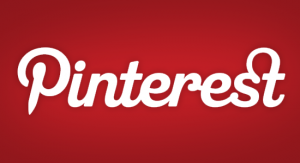Pinterest, an online visual “pinboard” that allows users to share and discover images related to their interests, is the latest craze in social media. Attention has been fueled in great part by its rapid rise in just two years to become the number three social network. But every marketer knows that relevant quality trumps quantity, so let’s quickly review 5 questions to help you decide if this is a quality place to invest your marketing time and effort, before turning to examples of brands making the most of Pinterest if you decide to dive in.
 Five Questions to Ask Yourself
Five Questions to Ask Yourself
1. Are your customers there?
Pinterest appeals most strongly to women, who represent 54-70% of it user base. That makes it a natural for a company marketing consumer product goods purchased by women, but if that’s not you maybe not yet.
2. Can you ‘own’ it?
Can the results of your investment get a copyright, trademark, be saved or protected in some way? If this is a new channel, should it be classified as paid, owned, or earned media? If not fully owned, what guidelines govern your relationship?
Pinterest is mostly designed to encourage ‘pinning,’ or sharing, of other people’s images. You can, of course, pin your own images. Make no mistake, however, you will not own or control the content on your Pinterest boards in the same way you own your website.
3. Can it offer synergy with other marketing efforts?
Something new that you can integrate into your strategic marketing plan and use to get more out of what you are already doing is generally a win-win.
Pinterest enables sharing just about any image online, with attribution. To support your other marketing efforts, you will need compelling visuals that link back to your website, blog, or microsites.
4. Is there a market advantage from being in early?
Depending on your industry and your positioning, being on the leading edge as one of the first to adopt a promising new marketing technology can be expected, if not necessary. Then again, if yours is a more conservative world, you don’t want to forget the wisdom in the term ‘bleeding edge.’
Pinterest is already the number 3 social network, so it’s too late to be on the leading edge. There’s still opportunity to be among the first to use the network well though — the number of successful brands on Pinterest is still small, especially in the B2B arena.
5. Do you have the capacity to do it well?
You can only do so much. It’s easy to be distracted and lose sight of the reality that no matter how promising something new is, you must execute it well to derive any benefit. In marketing communications, in particular, a low-quality implementation can be much worse than doing nothing at all.
Today, Pinterest represents just one more thing to learn and do for many small businesses and nonprofits. Pinterest is still a long way from the consumer marketing reach of Facebook’s 750 million users. And we cannot forget that despite all the never-ending buzz about social media, email is still the most popular way for most people to share information.
Your Decision
Every business will answer these questions differently, of course. If you can answer “yes” to 3 out of 5 of these questions, I generally think this new whatever is probably worth exploring further. If you answer yes to 5 out of 5, jump on it! It may still turn out to be a short-term infatuation, but it’s more likely to be a trend and a marketing opportunity you won’t want to miss.
Five Brands using Pinterest Well
The brands doing well on Pinterest are not overly promotional, but they are visually interesting and they offer ample opportunity to click through to their home website. Check out these examples to get inspired.
Whole Foods Market
Peapod grocery delivery service
Chobani yogurt
Resources
Connect with me on Pinterest: http://pinterest.com/pheffernanvt/
Wall Street Journal primer on Pinterest
4 Reasons Pinterest Wins with Women (And Facebook Loses) – Forbes
7 Useful Pinterest Tools You Should Know
Brands on Pinterest: To $ or Not to $?



